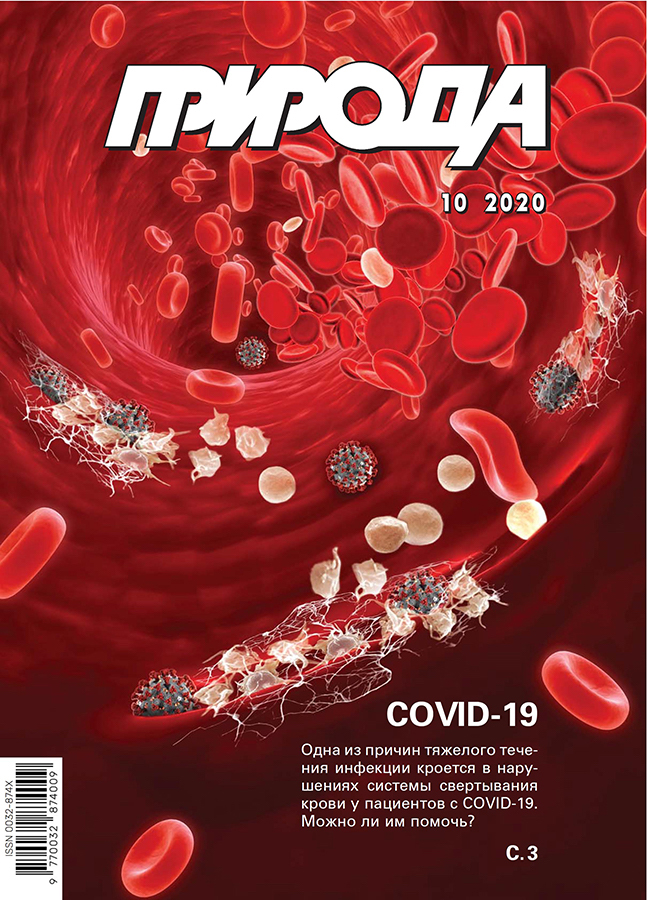What Led to the Origin of Dogs?
- Authors: Sergin V.Y.1
-
Affiliations:
- Issue: No 10 (2020)
- Pages: 40-48
- Section: Articles
- URL: https://journals.eco-vector.com/0032-874X/article/view/631078
- DOI: https://doi.org/10.7868/S0032874X20100051
- ID: 631078
Cite item
Abstract
According to dominant notions, the appearance of dogs is associated with the fact that a large number of edible waste began to accumulate at the paleolithic settlements. Not very timorous wolves used them. They became more tolerant of people, contact them, and gradually become domesticated. However,it is more likely, that wolves and humans became closer to each other because of mutual anxiety about their food.
Keywords
References
- Шнирельман В.А.Происхождение домашних собак // Приро-да. 1985. No7. С.92–101.
- Grimm D.World’s first images of dogs — and they’re wearingleashes. Science AAAS (www.sciencemag.org/news/2017/11/these-may-be-world-s-first-images-dogs-and-they-re-wearing-leashes).
- Новые перспективы «лисьей модели» в изучении генетикиповедения. Интервью с А.В.Кукековой // Природа. 2018. No12.С.3–11
- Сергин В.Я.Первые собаки: когда и где? // Природа. 2019.No11. С.14–19.
- Богданов Е.А.Происхождение домашних животных. М., 1937. [Bogdanov E.A.Origin of domestic animals. Moscow, 1937. (In Russ.).]
- Питулько В.В., Каспаров А.К.Костные остатки раннеголоценовых домашних собак из Жоховской стоянки (восточная СибирскаяАрктика) и проблема достоверности идентификации древних Canis familiarisиз археологических раскопок. Stratum plus. 2016; 1: 171–207. [Pitulko V.V., Kasparov A.K.Early Holocene Dog Bones from the Zhukhov Site (East Siberian Arctic) and the Question of the Reliability of Identification of Early Canis familiarisfrom Archaeological Excavations. Stratum plus. 2016; 1:171–207. (In Russ.).]
- Лоренц К.Человек находит друга. М., 2002. [Lorenz K.A person finds a friend. Moscow, 2002. (In Russ.)]4.Zeuner F.E.A history of domesticated animals. L., 1963.
- Коппингер Л., Коппингер Р.Собаки. Новый взгляд на происхождение, поведение и эволюцию собак. М., 2005. [Cooppinger L.,Coppinger R.Dogs. A new look at the origin, behavior, and evolution of dogs. Moscow, 2005. (In Russ.).]
- Driscoll C.A., Macdonald D.W., O’Brien S.J.From wild animals to domestic pets, an evolutionary view of domestication. Proceedings of the National Academy of Science of the USA. 2009; 106(Suppl.1): 9971–9978.
- Truth L.N.Early Canid Domestication: The Farm-Fox Experiment. American Scientist. 1999; 87(2): 160–169.
- Саблин М.В.Природный и социокультурный феномен появления собаки в верхнем палеолите. Хронология, периодизацияи кросскультурные связи в каменном веке. Замятнинский сборник. СПб., 2008; 127–133. [Sablin M.V.Natural and socio-culturalphenomen of dog appearance in the upper paleolithic. Chronology, periodization, and cross- cultural relations in the stone age.Zamyatninsky sbornic. Saint-Petersburg, 2008; 127–133. (In Russ.).]
- Morey D.F., Jeger R.Paleolithic dogs: Why sustained domestication then? Journal of Archaeological Science: Reports. 2015; 3: 420–428.
- Эволюция экосистем Европы при переходе от плейстоцена к голоцену (24–8 тыс л.н.). М., 2008. [Evolution of Europeansecosystems during the transitions from the Pleistocene to the Holocene (24–8 thousands years ago). Moscow, 2008. (In Russ.).]
- Stuart A.J., Lister A.M.Extinction chronology of the cave lion Panthera spelaea. Quaternary Science Reviews. 2011; 30: 2329–2340.
- Miller R.Mapping the expansion of the Northwest Magdalenian. Quaternary International. 2012; 272–273: 209–230.
- Street M., Joris O., Turner E.Magdalenian settlement in the German Rhineland: An update. Quaternary International. 2012; 272–273: 231–250.
- Langlais M., Costamagno S., Laroulandie V. et al. Evolution of Magdalenian societies in South-West France between 18,000 and 14,000cal. BP: Changing environments, changing tool kits. Quaternary International. 2012; 272–273: 138–149.
- Kuntz D., Costamagno S.Relationship between Reindeer and Man in Southwestern France during the Magdalenian. Quaternary International 2011; 238: 12–24.17.Marlowe F.W.Hunter-Gatherers and Human Evolution. Evolutionary Anthropology. 2005; 14: 54–67.
- Суворов А.П.Социальная организация и пространственная структура популяций волка. Ареалы, миграции и другие перемещения диких животных. Владивосток, 2014. [Suvorov A.P.Social organizations and spatial structure of wolf populations.Ranges, migrations and others movements of wild animals. Vladivostok, 2014. (In Russ.).]
- Поведение волка. Отв. ред. Д.И.Бибиков. М., 1980. [Wolf behavior. D.I.Bibicov (ed). Moscow, 1980. (In Russ.).]20. Волк: Происхождение, систематика, морфология. Отв. ред. В.Е.Соколов. М., 1985. [Wolf: Origin, systematics, morphology. V.E.Sokolov (ed). Moscow, 1985. (In Russ.).]
- Гордиюк Н.М.Взаимоотношения копытных животных и крупных хищников Южного Урала. Миасс, 2002. [Gordiyuk N.M.Relationship of ungulates and the large predators of the southern Urals. Miass, 2002. (In Russ.).]
- Юдин В.Г.Волк Дальнего Востока России. Владивосток, 2013. [Yudin V.G.The wolf of the russian Far East. Vladivostok, 2013. (In Russ.).]
- MacNulty D.R., Tallian A., Stahle D.R. et al.Influence of Group Size on Success of Wolves Hunting Bison. PLOS One. 2014; 9(11): e112884. doi: 10.1371/journal.pone.0112884.g001.
Supplementary files









